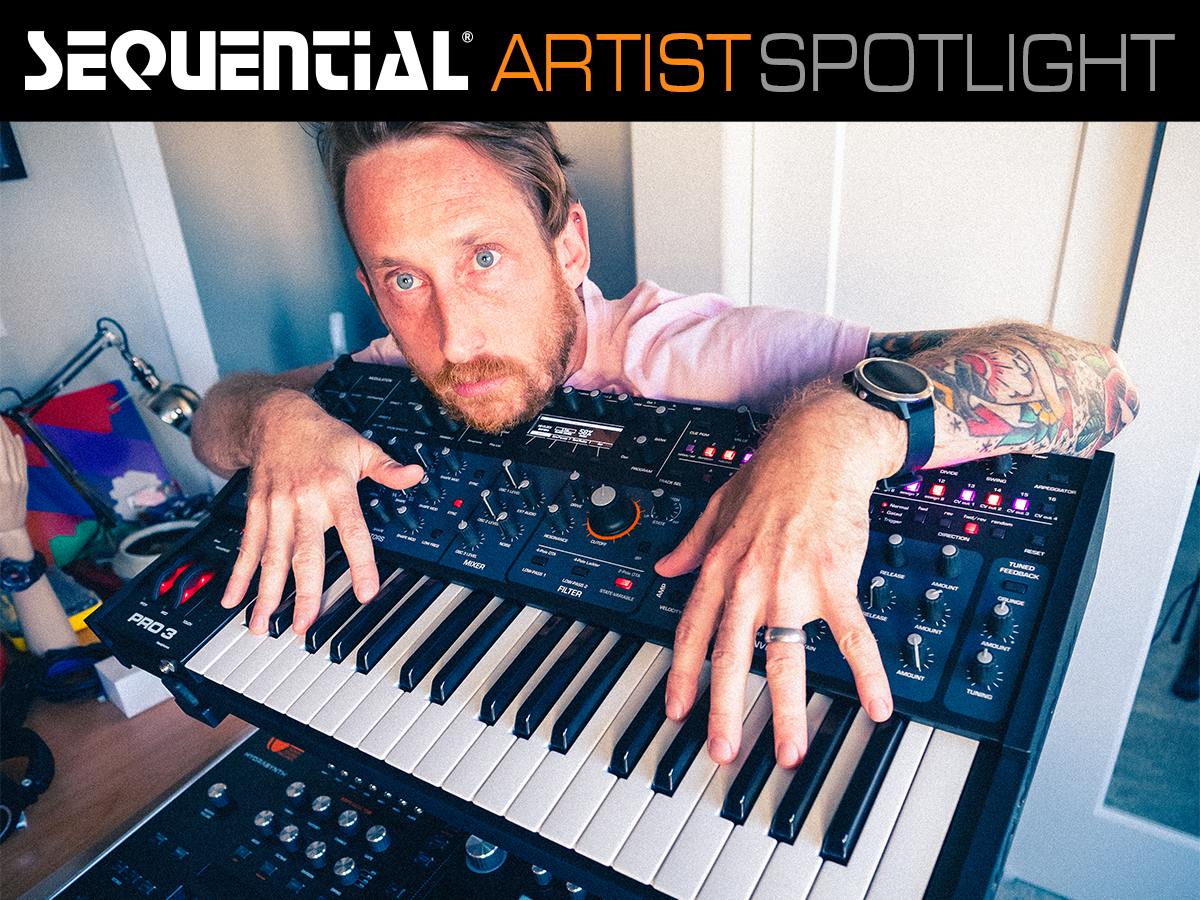
Jeremy Leaird-Koch is a music performance college dropout who lives in Seattle, Washington. He makes music as “Jeremy Blake” and videos about music for YouTube as “Red Means Recording.”
We chatted with Jeremy on how he’s been using the Pro 3 in his music:
What made you choose the Pro 3?
Even before the Pro 3, ever since I cared about hardware synths, the Prophet 12 was my dream synth. The hardware, the features, the modulation options. It looked and felt like an instrument that would last a lifetime. Sequential has always been on my radar as having some of the best synths in the entire industry, and I knew at some point I would have to bring one into my studio.
Fast forward to NAMM 2020 and I tried the Pro 3. I was instantly in love. Every sequence, every sweep of the filter, all the modulation. It was amazing. I realized that, even though the Prophet 12 was still something I wanted, the Pro 3 had the sound I wanted.
Right after NAMM I put in an order, and I’ve been happy ever since.
How are you using it?
When I first get a new synthesizer I do two things: make at least one preset a night for a month, then try making a couple tracks only using that one synth. In the case of the Pro 3, I managed to get two tracks out in extremely different genres, that became a mini EP.
The thing about rapid-fire creation with a single synth as your source is that you’re immediately forced to push it into all the places it can go to get the right sound for the right part.
For the first track on the EP, Slow Down, the Pro 3 showed off its fuzzier alternative side. Tobacco, Tame Impala, etc. The distortion and slop on it are very musical, and it wasn’t at all hard to get powerful and delicate sounds that fit nicely into the mix.
For On the Way to Heaven the Pro 3 was used in a more traditional electro track. Again, dialing in the sound was super easy. Punchy bass that opened up with modulation from the touch slider, shimmery plucks using the onboard reverb, warm chords for the second verse, and complex arpeggios that add interest to the chorus. It was all just there for the taking.
I think the most interesting thing was how little I had to do in the mixing and mastering stage to get the sound to where I wanted it to. For a synthesizer that has such a huge sound, it also has lots of shaping tools to make a sound fit where you want it.
What is one of your favorite things about it?
The modulation. So much modulation, so many sources, so many destinations. The audio rate modulation is amazing on things like panning. The round robin of the three oscillators in paraphonic mode give you incredible textures depending on how you use it.
The VCOs are wonderfully alive. Listening back to the parts of the tracks I realize how much their sound plays a part in how the pieces come together.
Another thing about modulation: the source+destination buttons and their implementation in creating modulation connections is one of the most intuitive and easy to use things I’ve ever experienced.
What does it give you that other synths might not?
Again, modulation, sound quality, and filter options. The state-variable filter is beautiful, and I wish more synths had it. The quality of the effects are stupendous. The rotary speaker effect, for instance, adds a really cool stereo grit to sounds.
Add to these the amount of CV modulation options, both in and out, and you’ve got a synth that really wants to play with the word of modular, which makes sense given that with all the modulations it offers internally, it’s almost modular unto itself.
Any interesting tricks or techniques you would like to share?
On the Pro 3, the sequencer is your friend, as is the “limitation” presented by paraphonic mode. Setting up complex modulations for the wavetable position, and ratchet, and other parameters in the sequencer will give you incredibly interesting results. Same with choosing unique waveshapes and scale intervals with the three oscillators, and playing sequences that round robin through them. Using the LFOs and Aux Envelopes to modulate waveshape and position, especially in paraphonic mode with the sequencer or arp running, creates incredible evolving patches.
LINKS
MORE ABOUT SEQUENTIAL
For more information, check out the Sequential product page here.
Find your local dealer for pricing here.
If you’re using Sequential products in interesting ways, tell us about it. Contact us at .
